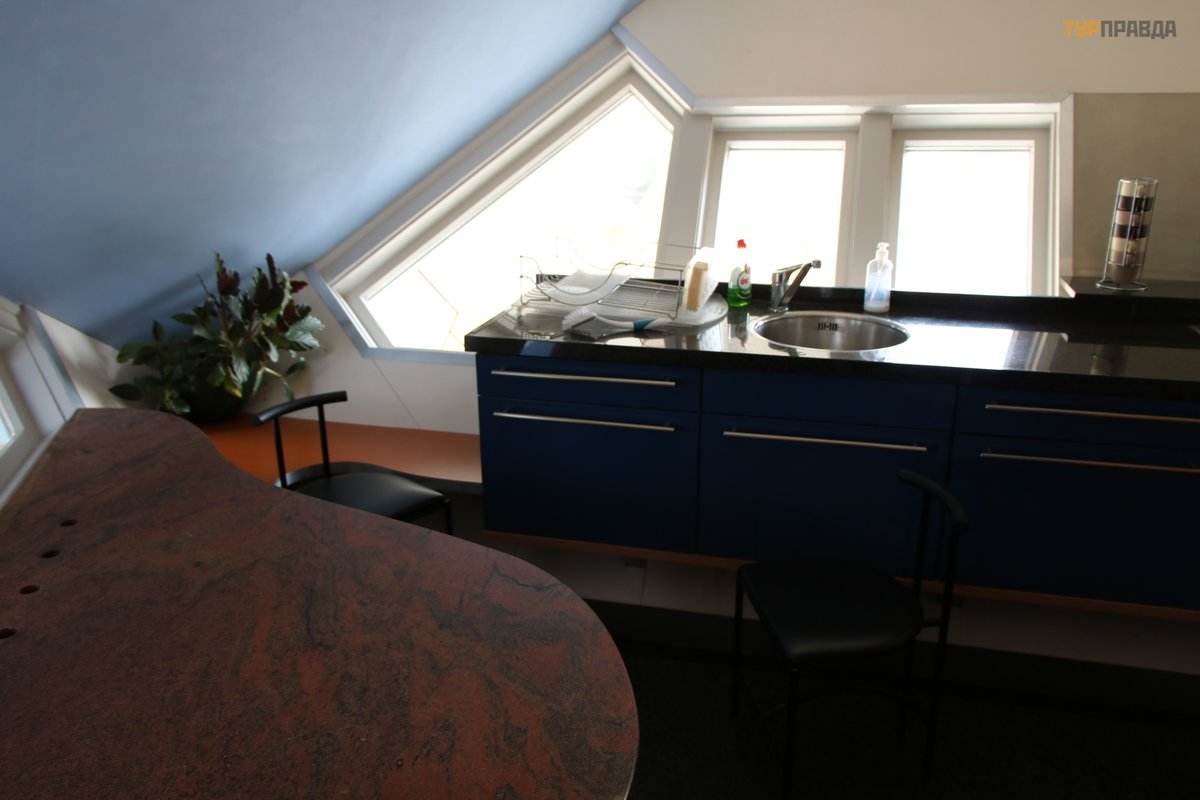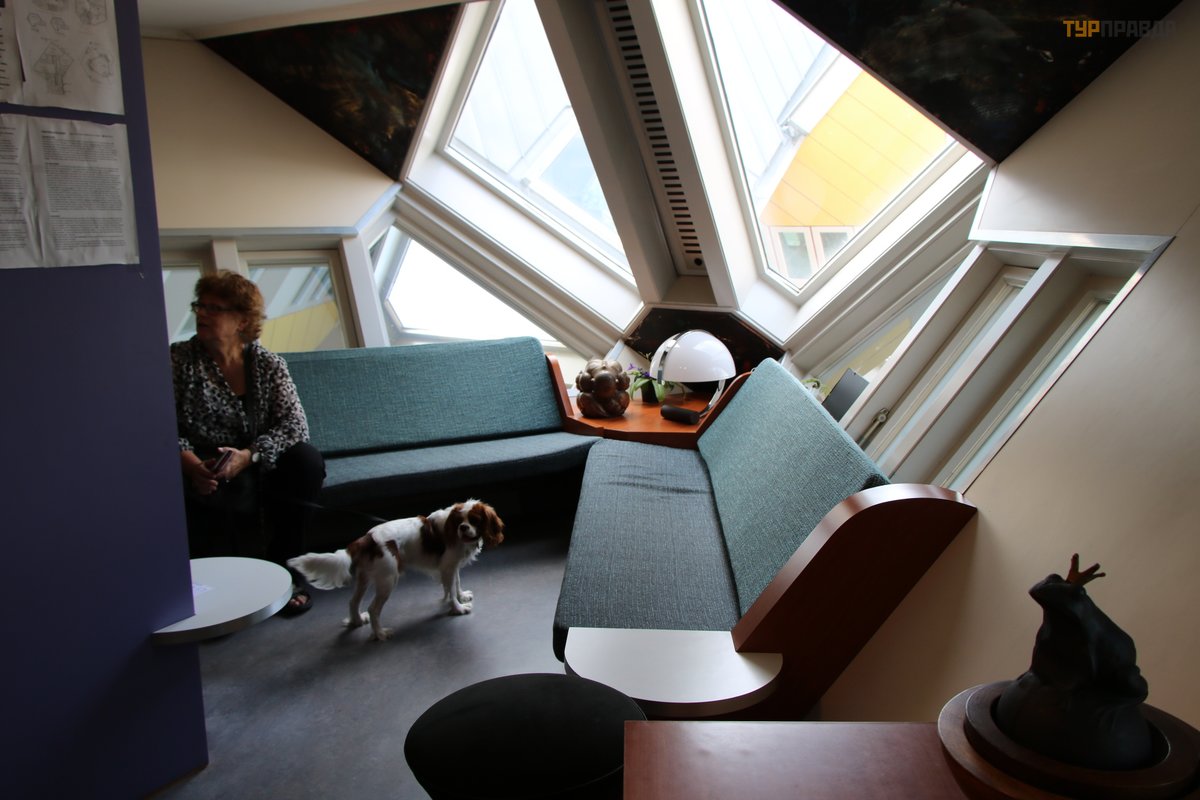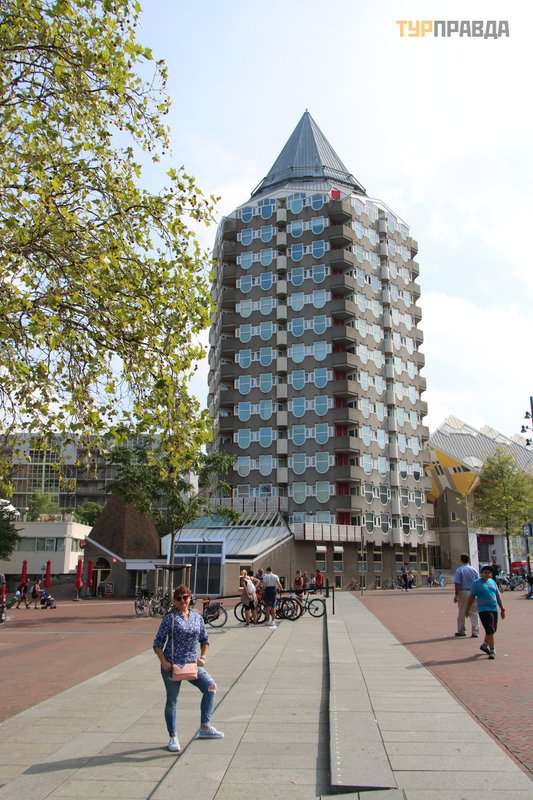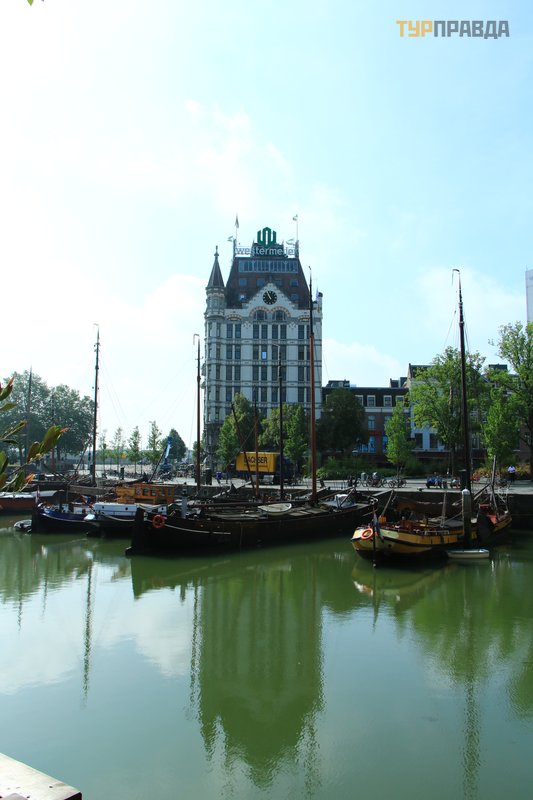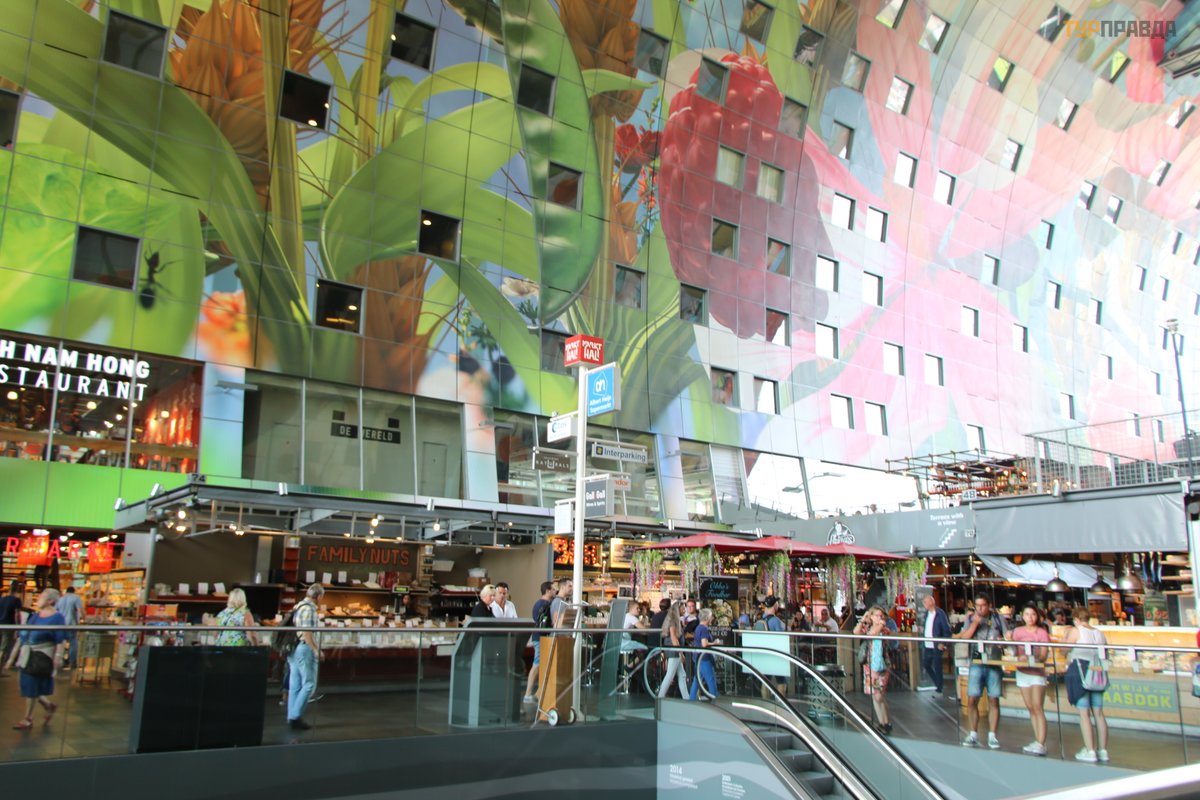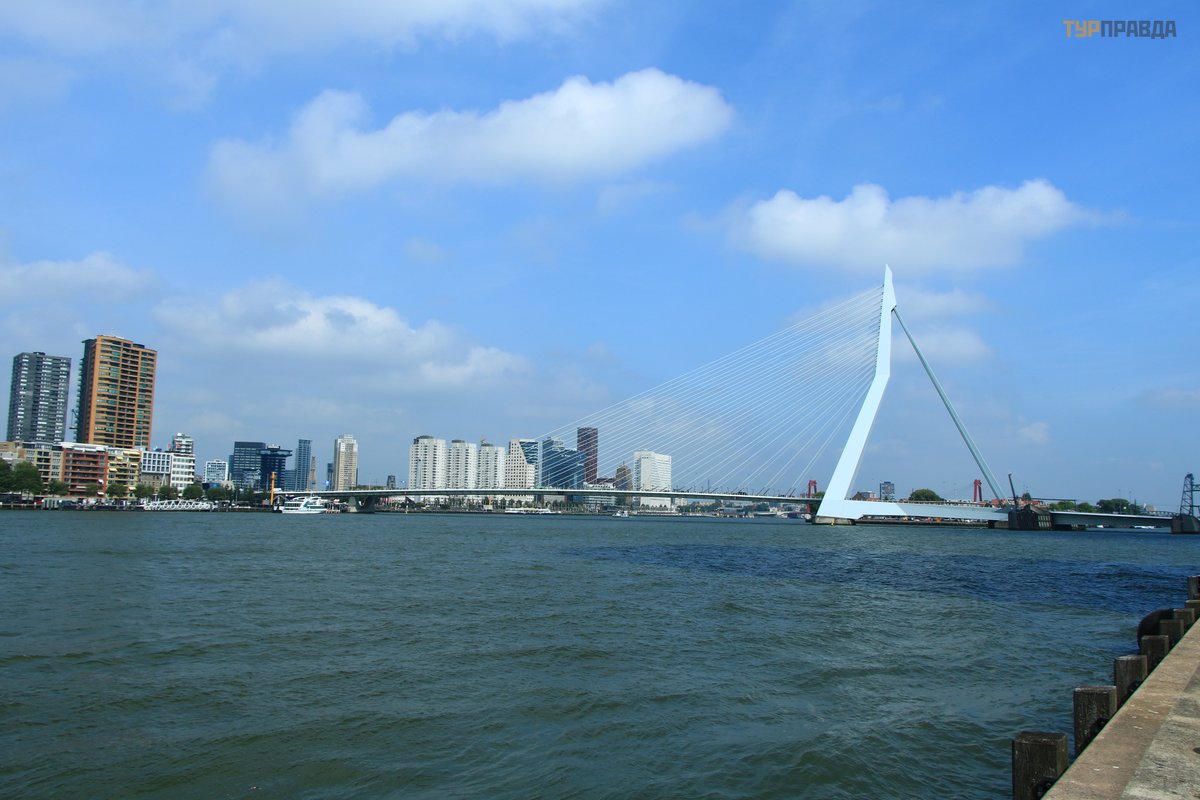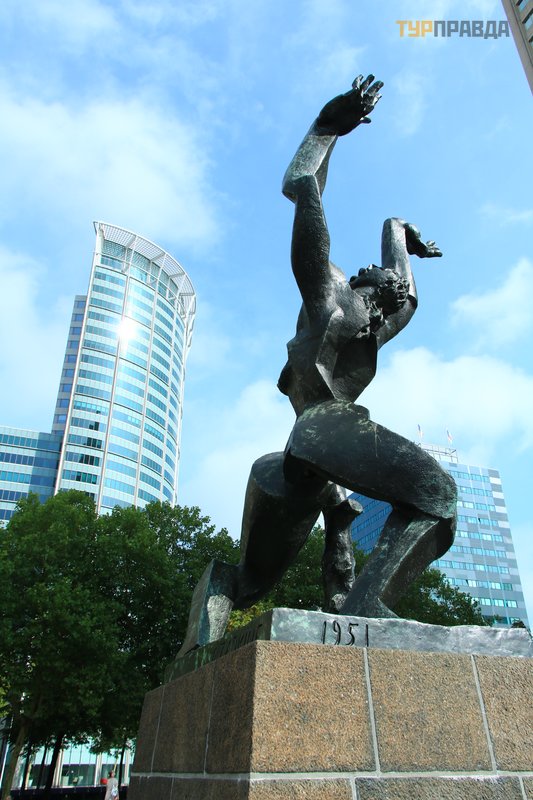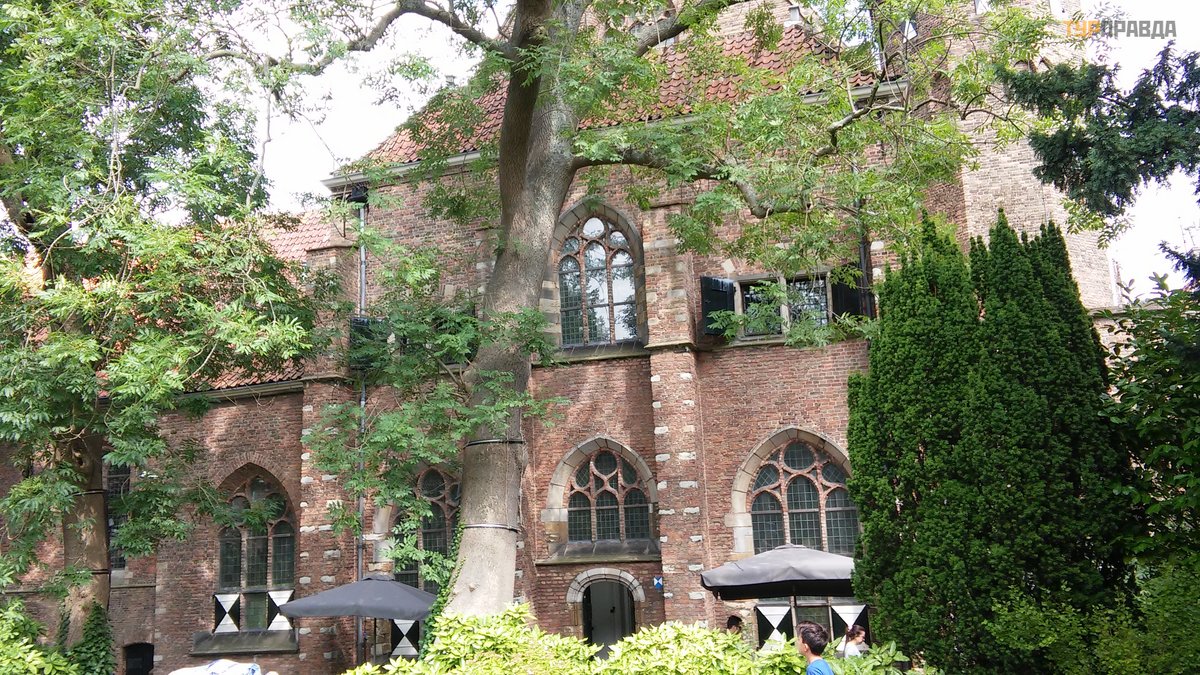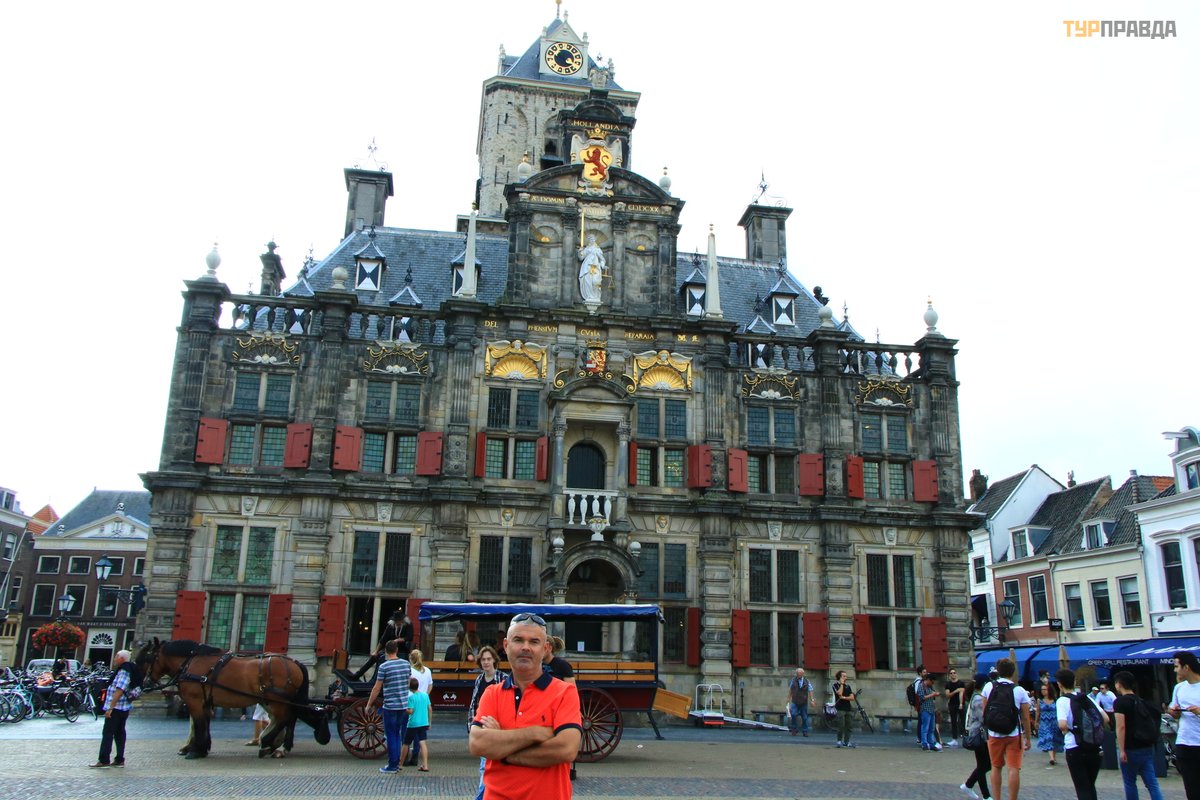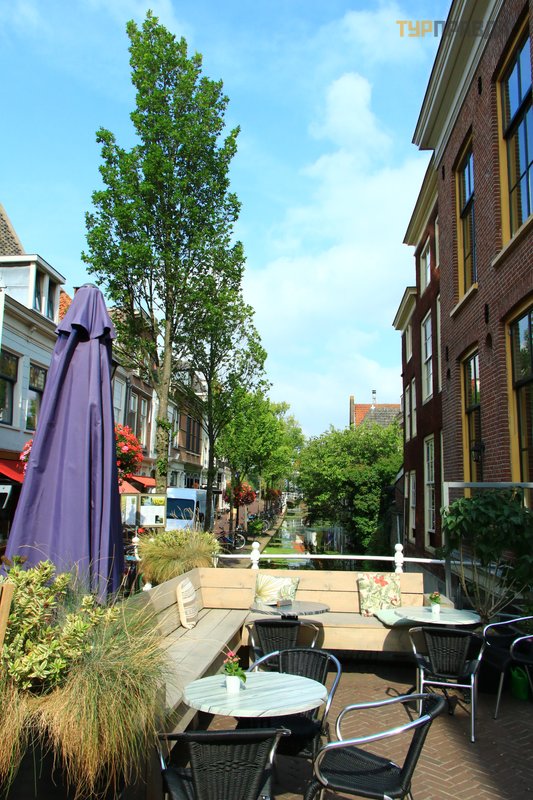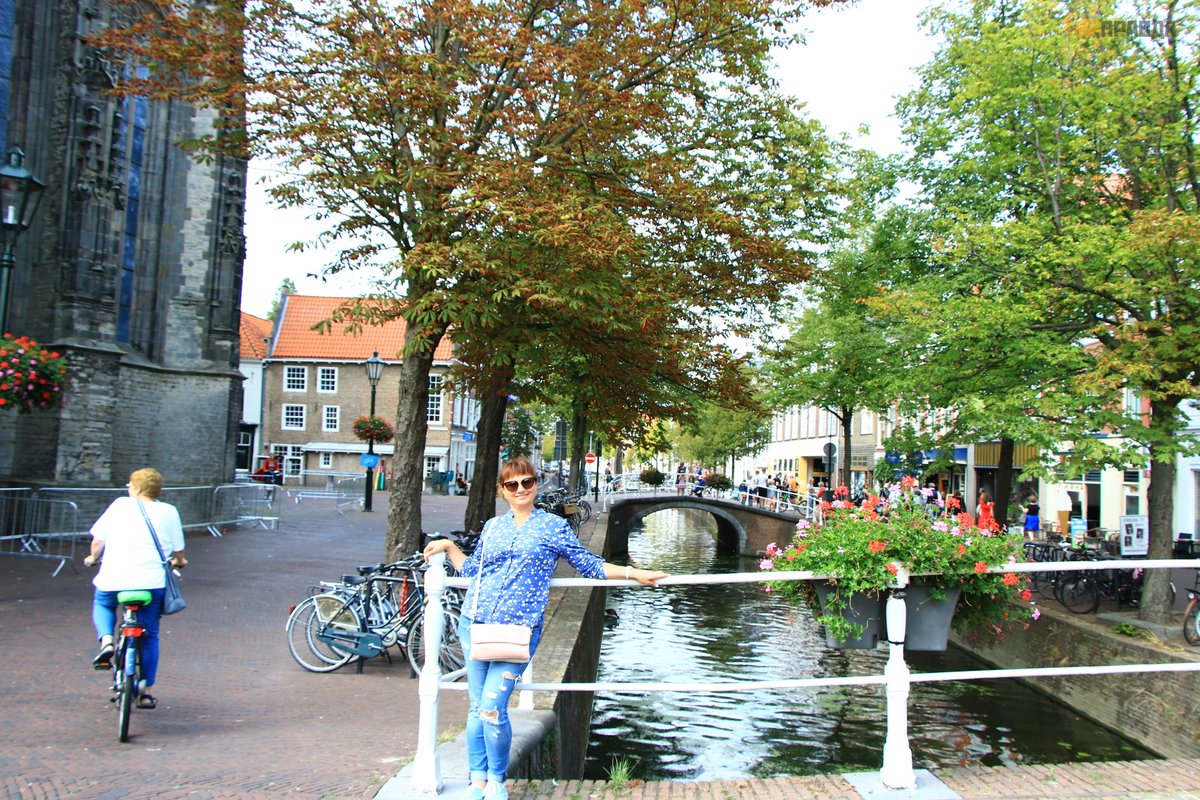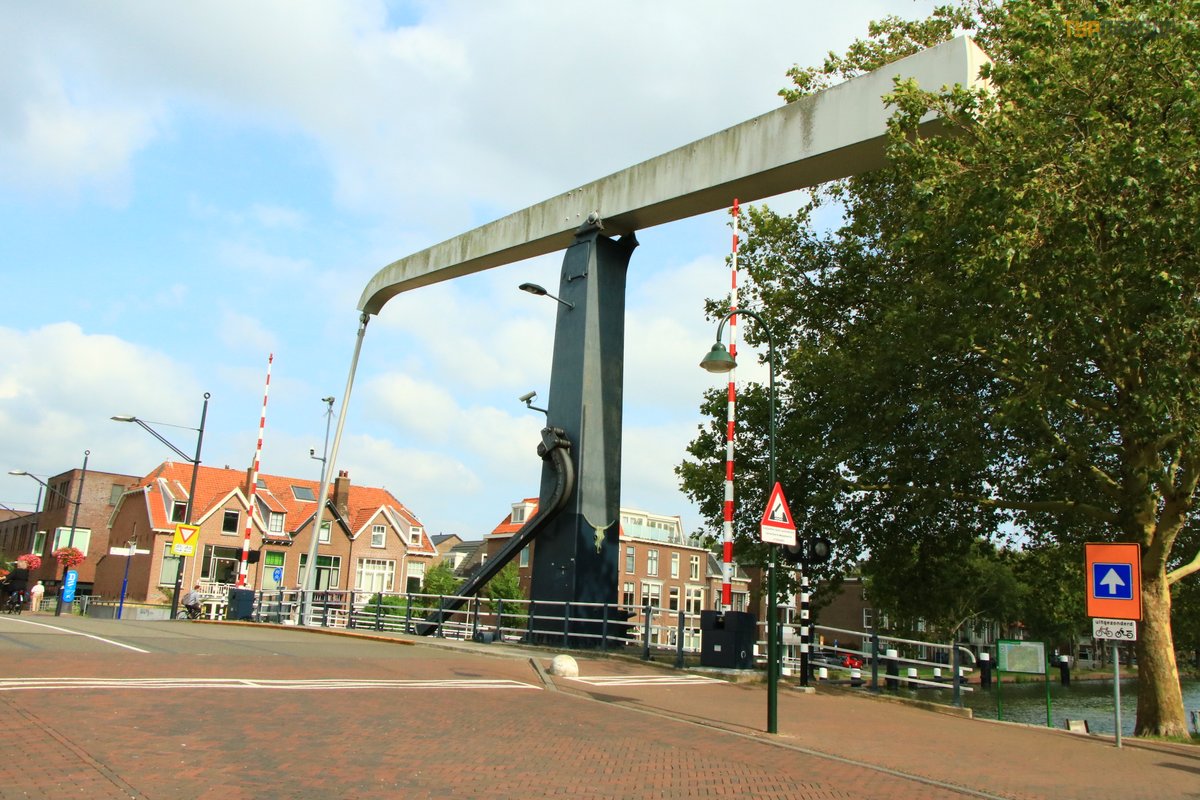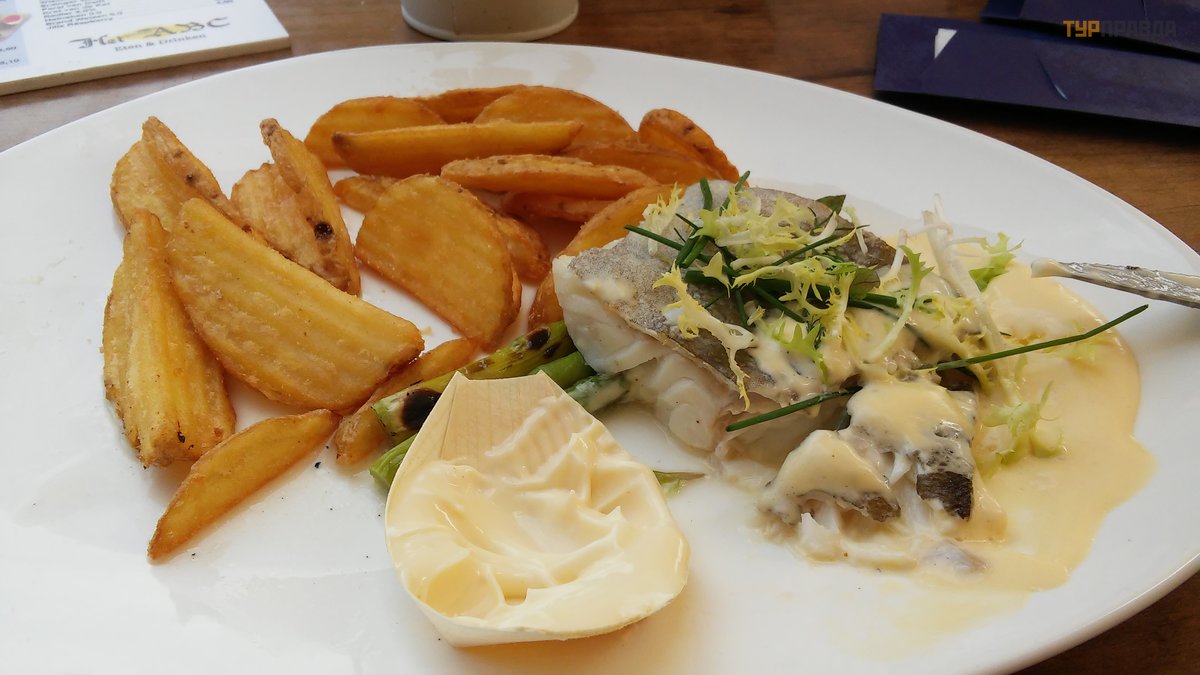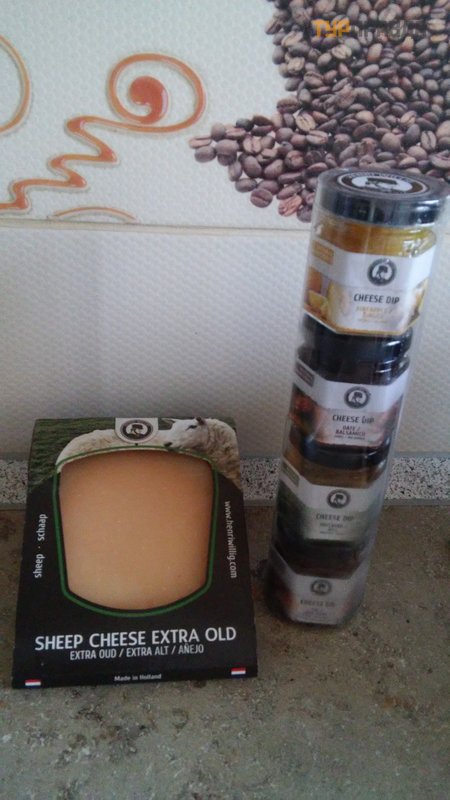The Netherlands is working Rotterdam, ruling The Hague and walking Amsterdam!
Netherlands means "low lands" as most of this small country is below sea level. It would seem that everything should be in the water, but when you land at Schiphol Airport, which is four meters below sea level, you find that it is absolutely dry there. And even in Amsterdam, which seems to be all in the water, there is a subway. This fact was completely unknown to me and caused delight. It turns out that the entire historical center stands on wooden piles, and below, at a depth of 17 meters, a subway was built on concrete piles. The metro, of course, is not big, only 4 branches, but it is there. The Russian Emperor Peter the Great himself, having visited Holland, decided to build St. Petersburg, which was also located in a swampy area, it’s only a shame that the Dutch built their country using mental resources, and Tsar Peter used human resources. All I knew about the Netherlands was that it had famous cheese, tulips, canals, wooden shoes, windmills, and the most delicious herring in the world.
Acquaintance with this small country usually begins with the capital - colorful Amsterdam. We, having settled in the evening in a unique hotel in Amsterdam, which is a ship on the water, went to Rotterdam in the morning. Whether or not to go to Rotterdam was a dilemma for us, as I insisted on the trip, while my husband was sure that there was absolutely nothing to do there. But our comrades, who joined the discussion, argued in favor of Rotterdam, what, how long can you watch cities with centuries-old architecture? And so we decided together to go see the modern city. It is very easy to get from Amsterdam to Rotterdam, the distance is only 70 km and in 40 minutes you will arrive in Rotterdam by high-speed train for 15 euros.
Rotterdam is the largest port that is constantly being updated and changing its appearance. It is absolutely different from all the usual European cities. It so happened that during the Second World War the city was literally wiped off the face of the earth and after the war it was decided not to rebuild it in its former form, but to give the city a completely new look with modern architectural trends. It really is full of futuristic architecture, ridiculous monuments and experimental pavilions.
The most unusual object is cubic houses.
Cube Houses is a complex built in 1984 by architect Peter Blom. Located on the street Overblaak. The complex looks really unusual, and at first you think that this is a museum. But actually it is not. People live in cubes! We pay 3 euros and go to see how you can live in it. Everything is smooth inside, no distortions.
The basement floor is the foundation for all other floors, shops and offices are located here.
And above - these are already residential areas. On the second floor there is a kitchen and a living room. . .
Living room
. . . and on the third bedroom and bathroom.
A very unusual architectural solution. Blom simply flipped the standard box 45 degrees and thus got a real architectural masterpiece. There are 38 houses in total, and all of them are interconnected by a common wall, and from a height they look like inverted triangles. These houses rank high among the most unusual buildings in the world.
Another whimsical apartment building, similarly designed by Blom, is called Pencil House because it has a pointed pencil-shaped roof and a hexagonal foundation. And the ordinary house in the form of a box standing next to the “pencil” was nicknamed “the eraser” by the locals.
Pencil House
Not far from the cube houses is the Old Harbor. This is a historical place on the embankment of the river Meuse. But this white house, 45 meters high, in the 19th century was the tallest building in Europe, by the way, this is almost the only building that survived after the bombing.
On this occasion, a small remark: the Europeans do not like the French a little for the fact that they surrendered Paris literally immediately, without resistance. And I think with horror, what would have happened to Paris if it had not been surrendered? After all, he would just as well be wiped off the face of the earth. So, maybe the French, by their decision, simply saved the city, preserving the world heritage?
There are many old boats in the harbor, there is a museum and you can touch everything with your own hands.
Be sure to visitMarthall market. It is very interesting and unusual. This is a huge shopping center, which is considered one of the most extravagant and beautiful markets in Europe. It is built in the form of a large arch, decorated with mosaic tiles.
There are indoor and outdoor areas. In the covered areas there are cafes and shops, and in the open areas various sweets are sold, and everything is not very expensive. You can try different cheeses, honey, Dutch waffles, pies and sandwiches.
Various oriental spices are also on sale
And also a lot of cheeses. Where without them?
After wandering around the market and feasting on caramel waffles and fruits, we set off to get acquainted with other sights. If you are a shopping lover, then the market is not suitable for it, but there is a boutique center near the market where you can shop. Exit the market, turn left and go straight, this will take you to Boistraverse street, where there are many shops. They work seven days a week, ie. without days off, which is rare for Europe. But we did not go there, because it was a pity it was time.
And we are going to see the symbol of the city - Erasmus Bridge.
Its feature is asymmetry and two structures are connected in it: a suspension bridge and a drawbridge 82 meters long. The Dutch themselves call it the Swan, it really looks like a swan.
Walking around the city, you can meet unusual monuments. Here is an example
Resurrection from the Ashes Monument
After that terrible bombing in 1940, Rotterdam truly literally rose from the ashes, like a Phoenix bird, and hands outstretched to the sky seem to conjure “save and save”
Or this ridiculous masterpiece of avant-garde architecture
Despite this slightly awkward design style, Rotterdam still attracts with its modern futuristic architecture, and it is interesting to walk around it. Someone may consider it simple, boring and faceless, but for me it seemed a very memorable city with such a difficult fate.
We say goodbye to Rotterdam and go to see the traditionally historical puppet town of Delft. From the central station of Rotterdam, take the Regional Express train and after 15 minutes get off at the Delft station. The ticket costs 4 euros. Trains run every 20 minutes. The train station in Delft is located in the center, so you immediately find yourself in the Middle Ages.
Delft is a small, puppet-like, medieval town that I really like. It may not be able to compete with the Flemish neighbors Ghent and Bruges, but in terms of fabulousness it is definitely not inferior to them.
And white swans around, why not a fairy tale?
I tried to feed them, but they hiss so much and, snatching food from their hands, pinch painfully. Therefore, leaving the idea to feed them with hands, I simply admired these graceful birds.
In Delft, I had a great desire to visit the Royal Porcelain Factory, which produces hand-painted famous Delft porcelain in blue and blue tones, reminiscent of Russian Gzhel in appearance. Maybe the legs of the Russian Gzhel grow from here? Bus number 40 runs to the factory, which stops just a few meters from it. The factory operates from 9.00 to 17.00 daily from April to October, and from November to March 6 days a week, excluding Sundays. The cost of the tour is 8 euros (audio guide in English).
The tour begins with a story about the history of the royal factory. It was founded in 1653. and is the only factory of Delft blue pottery that has survived from the 17th century. And until now, in accordance with centuries-old traditions, porcelain is painted here only by hand.
Then the guide will explain to you all the stages of production, from the preparation and casting of ingots to the finished works of art.
Watching the work of the master is very interesting. The master works with concentration, he creates, and does not notice anyone around at all. It's nice to see how a beautiful product is obtained from an ordinary blank.
The tour also includes a visit to the showroom, which displays a complete collection of classic and modern Delft porcelain.
There is also a store where you can buy your favorite product. I really liked a vase worth 800 euros, but when I saw my husband’s reaction to the price tag, I silently took a magnet with kissing kids against the backdrop of a mill, well, at least I will have something in memory of the royal factory. (It’s better to come here without husbands, for them, everything that cannot be drunk and eaten is junk).
Disappointed by the lack of a vase that I never got, I went for a walk around the doll town. And first of all, we went to the main square, which is called the market square.
On the Market Squarethe old Delft City Hall is located.
This building burned down several times, then collapsed, then restored, and now we see a new building on the old foundation, but with a preserved tower from the 13th century. In general, some kind of heap of styles and eras.
Such pretty houses frame the market square.
And at the opposite end of the Market Square rises the New Church
It is the second highest in the Netherlands and its height is 108 meters. It looks very impressive against the backdrop of a small Delft. In this church, it turns out, there is a tomb of representatives of the royal dynasty. It is strange that the kings are not buried in the capital, but in little Delft.
Walking in this old town is a pleasure, it seemed to me like an open-air museum. I even got bored with Amsterdam on the second day, but I prefer such small chamber towns where you can sit quietly in cozy quiet cafes located right on the water.
In general, all the cities of this country are similar to each other in general pictures, canals everywhere, water in the middle, bicycles.
This is the oldest canal in Delft, which was dug in the 14th century. It is called the clothers' canal, because in the Middle Ages they used water from it to process wool. But it is like a semi-channel, since a road passes on one side of it, and residential buildings on the other.
Another attraction of Delft are suspension bridges.
We decided to have lunch in a cafe near the center. We ordered soup for 5.50 euros and cod with some kind of sauce for 20.50 euros and juice. In general, for 30 euros for two somehow had a bite. I don’t want to offend the Dutch, well, ordinary cod, which is no culinary masterpiece.
Immediately opposite, there was a colorful cheese shop, presumably specially for tourists. In the store, cheeses for every taste, eyes run wide. After tasting, I chose the “old Amsterdam” cheese made from sheep's milk for 14.50 euros per 300 grams, and bought sauces for it. The cheese is really tasty, I understand the crumbs in cheeses.
Next to Delft there is another equally significant town - The Hague.
The Hague is considered the unofficial capital of Holland, where ministries, parliament and the world-famous International Court of Justice, which sits in the Peace Palace, are located. It is convenient to travel by tram - cheap, fast and cheerful. A ticket costs 2 euros, buy directly on the tram from the driver and in 20 minutes you will be in The Hague.
And of course we're going to see the Peace Palace.
It was built in a classic English style with a courtyard and a fountain, and is surrounded by a garden. Of course, they didn’t let us inside.
And here is the meeting building of the government of the Netherlands.
We were told that The Hague has the most delicious herring in the world. We found a stall where they sell it, and decided to treat ourselves.
Hold the sandwich firmly in your hand, as the seagulls are watching you vigilantly and at the slightest mistake, you will only have a paper napkin in your hands. My friend, having taken the coveted herring, was just about to feast on it, when a huge seagull literally took it out of her mouth and she remained standing with her mouth open, only blinking her eyes. Seagulls do it just the same masterly. Having laughed, we went to buy a new portion of herring. So be careful.
Well, we decided to end our day with a trip to the "Northern Riviera", the most popular town on the North Sea Skhevenengen. Of course, we wanted to swim, but we did not even suspect how the name corresponds to its content. Therefore, we just sunbathed a little in this way.
It is very easy to get from The Hague to Schevenengen, either by the same tram number 1 or from the center by tram number 9. And I did visit the North Sea.
In general, a day very full of history, architecture and culture, and even the sea ended. We return to our hotel in Amsterdam. It was already night and you think we went to bed? No matter how. Our friend discovered the upper deck in our hotel, from where a stunning view of Amsterdam at night opened up, dragged benches from somewhere, built a table out of them and said that it was a sin to go to bed in such a stunning place.
We had such a beautiful night on the ship and the next day Amsterdam was waiting for us.
Continued here >>>




